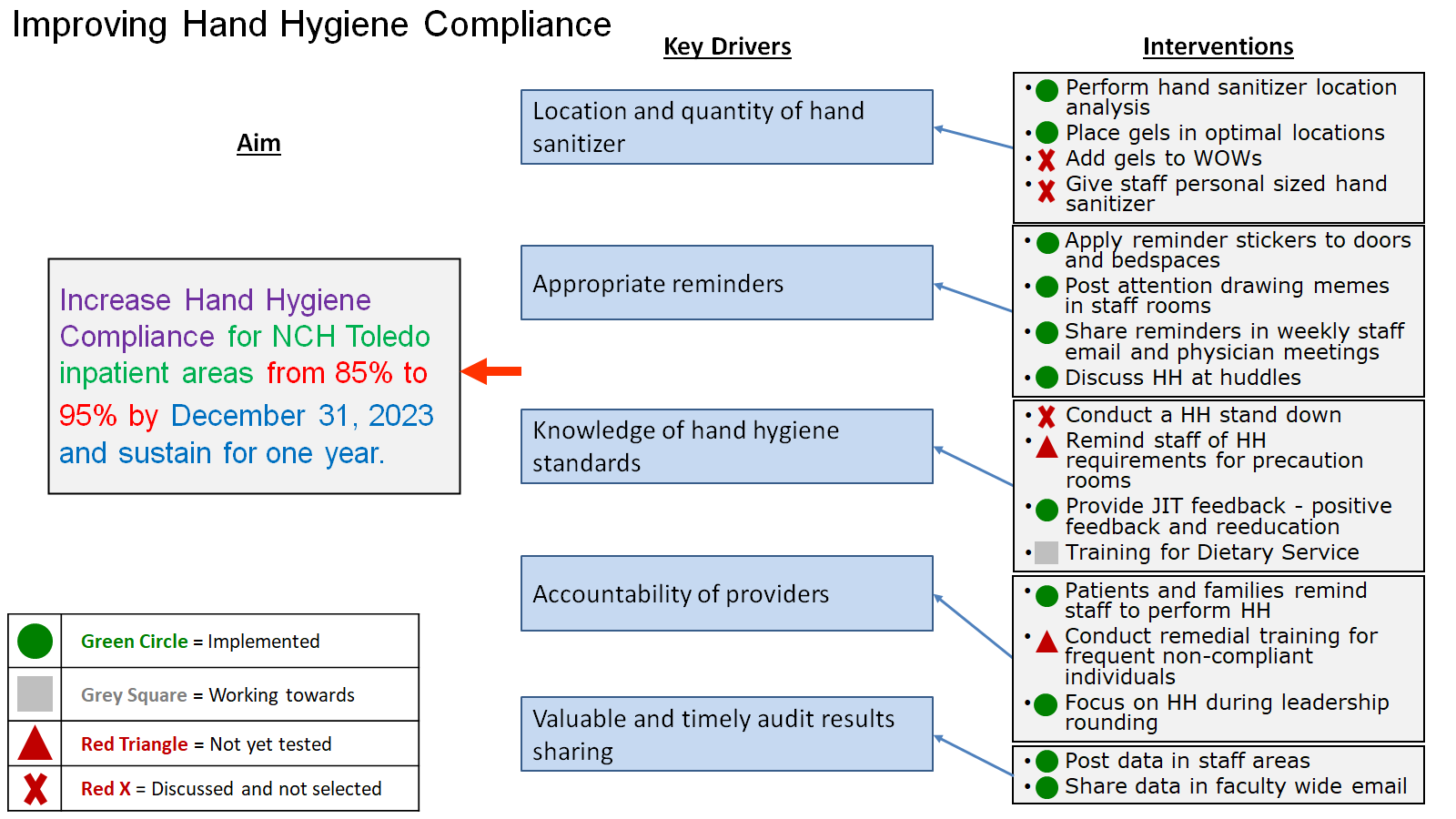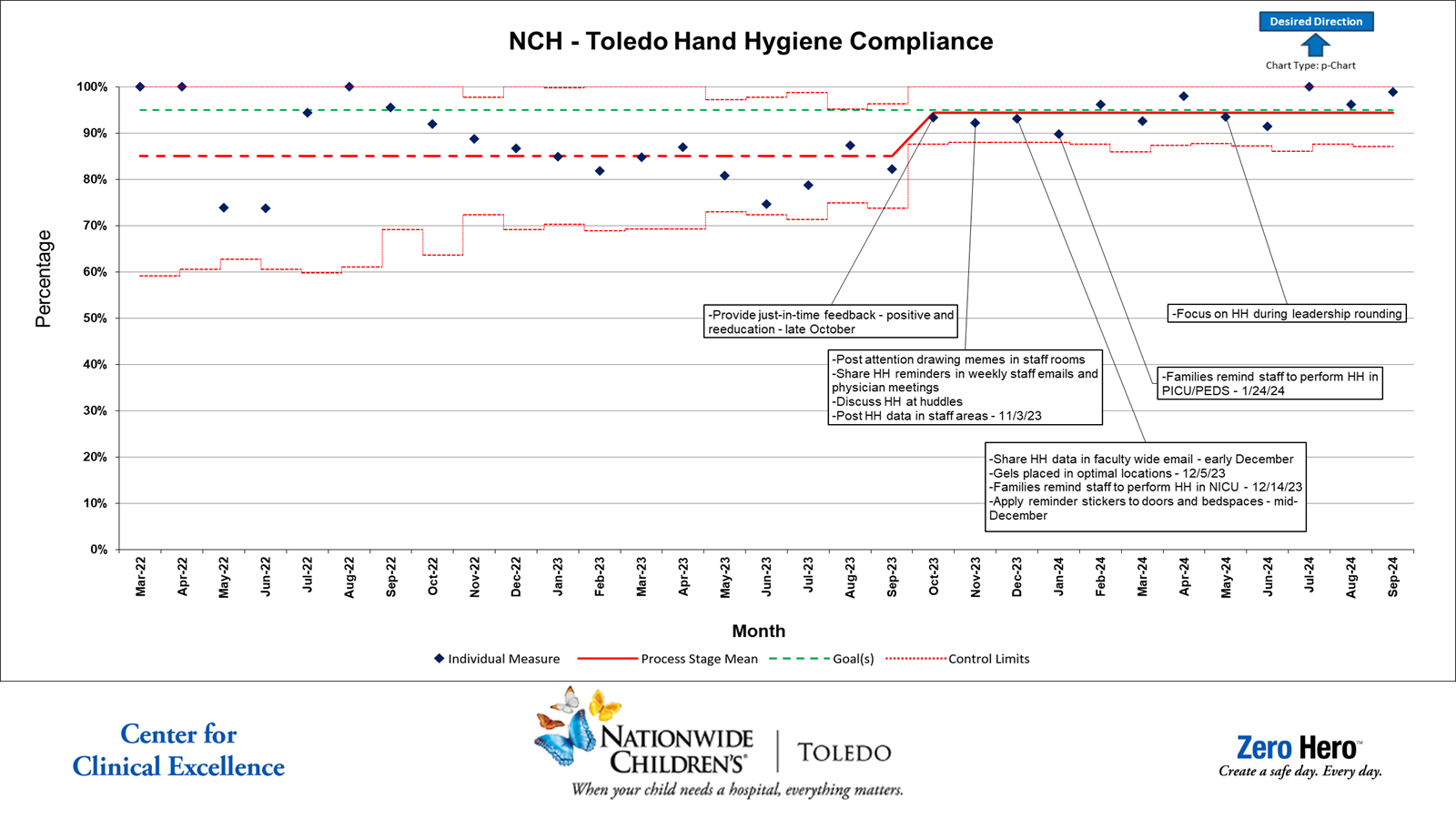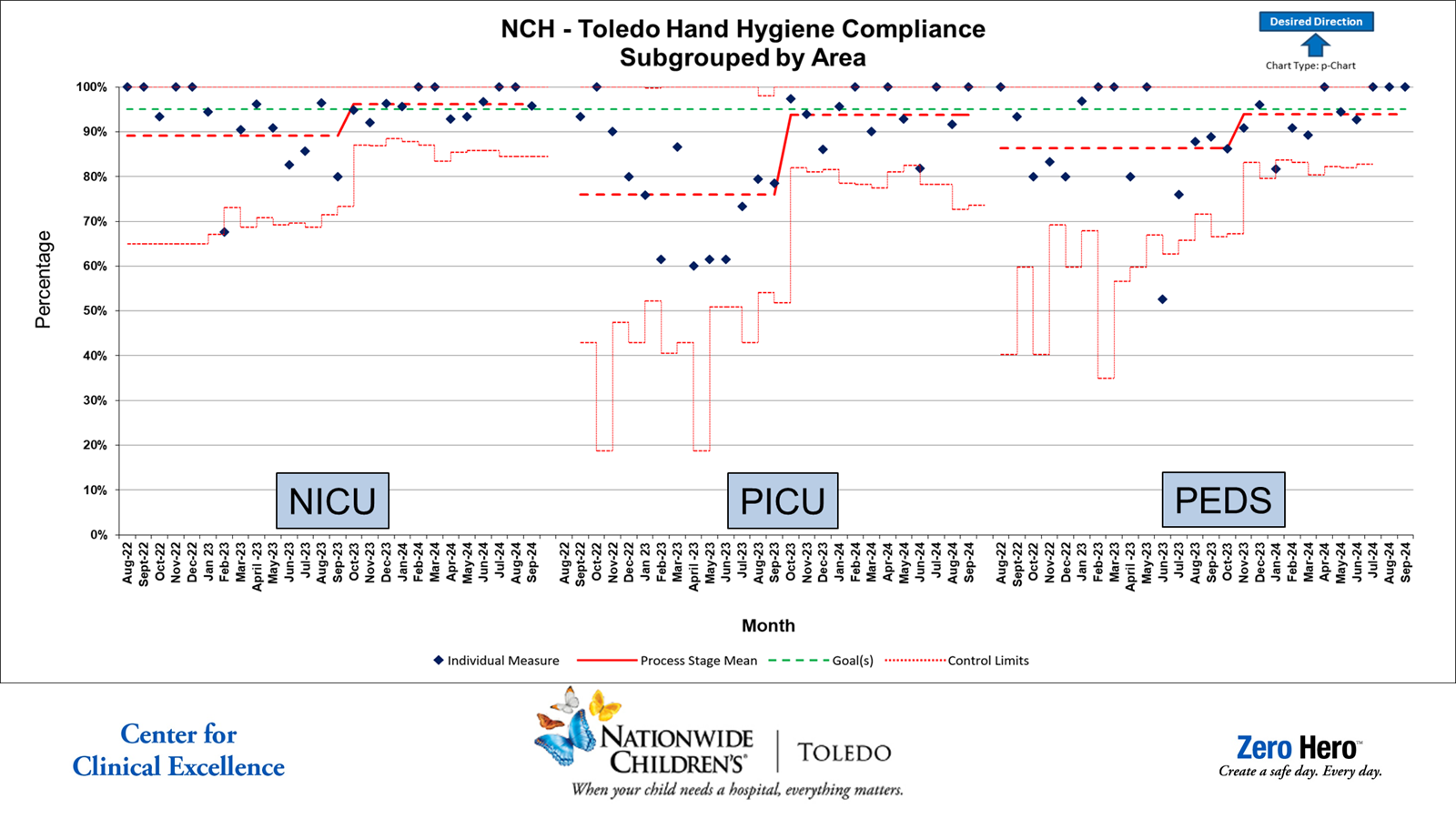Hospital Medicine 1: Quality Improvement
Session: Hospital Medicine 1: Quality Improvement
543 - A Quality Improvement Initiative to Improve Hand Hygiene Compliance
Saturday, April 26, 2025
2:30pm - 4:45pm HST
Publication Number: 543.3719
Heather M. Meade, Nationwide Children's Hospital Toledo, Findlay, OH, United States; Robert Murray, Nationwide Children’s Hospital-Toledo, The Ohio State University, Toledo, OH, United States; Mike Fetzer, Nationwide Children's Hospital, Columbus, OH, United States; Gagandeep Brar, Nationwide Children's Hospital, Toledo, OH, United States; Andrea L. O'Boyle, Nationwide Children's Hospital Toledo, Grosse Pointe, MI, United States

Heather M. Meade, MD (she/her/hers)
Chair, Department of Pediatrics
Nationwide Children's Hospital Toledo
Findlay, Ohio, United States
Presenting Author(s)
Background: The Joint Commission estimates that two million patients will contract a health care related infection each year with ninety thousand dying from their infection. Hand hygiene is of critical importance to reduce healthcare acquired infections, however up to 50% of care providers fail to perform hand hygiene with each patient encounter. We present a quality improvement initiative at our medium sized tertiary children’s hospital within a hospital aiming to improve our hospital’s hand hygiene compliance.
Objective: We aimed to increase hand hygiene compliance in our hospital’s inpatient areas (Neonatal Intensive Care Unit (NICU), Pediatric Intensive Care Unit (PICU) and pediatric unit) from 85% to 95% by December 31, 2023 and sustain this change for one year.
Design/Methods: Stakeholders from all patient care groups, including physicians, nurses, and respiratory therapists, developed a key driver diagram (Figure 1). Key drivers identified included: the location and quantity of hand sanitizer, the presence of appropriate reminders, knowledge of hand hygiene standards, accountability of providers and the timely sharing of audit results. Important interventions included: optimizing the location of hand sanitizer dispensers, the application of reminder stickers on doors and in each bedspace, the provision of just in time feedback when instances of non-compliance were identified and introducing a program that encouraged families to ask care providers if they had performed hand hygiene. Nursing managers conducted random hand hygiene audits on each of our inpatient units with data reported monthly to our stakeholder group.
Results: Hand hygiene compliance improved in our hospital from 85% to 94% across all units (Figure 2). Hand Hygiene compliance additionally improved on each of our individual units (Figure 3); the NICU improved from 89% to 96%, the pediatric unit improved from 87% to 94% and the PICU improved from 77% to 94%. We identified members of our dietary team as the largest contributor to non-compliance on our pediatric unit and PICU.
Conclusion(s): A systematic quality improvement-based approach has the potential to improve, and sustain, the performance of appropriate hand hygiene across multiple units at a medium sized tertiary children’s hospital within a hospital. Through our program we believe we have instituted culture change surrounding the importance of hand hygiene amongst our care providers. A future direction for improvement includes increasing rates of hand hygiene compliance among out dietary team.
Figure 1 - Key Driver Diagram

Figure 2 - Hospital Wide Hand Hygiene Compliance

Figure 3 - Hand Hygiene Compliance by Unit



